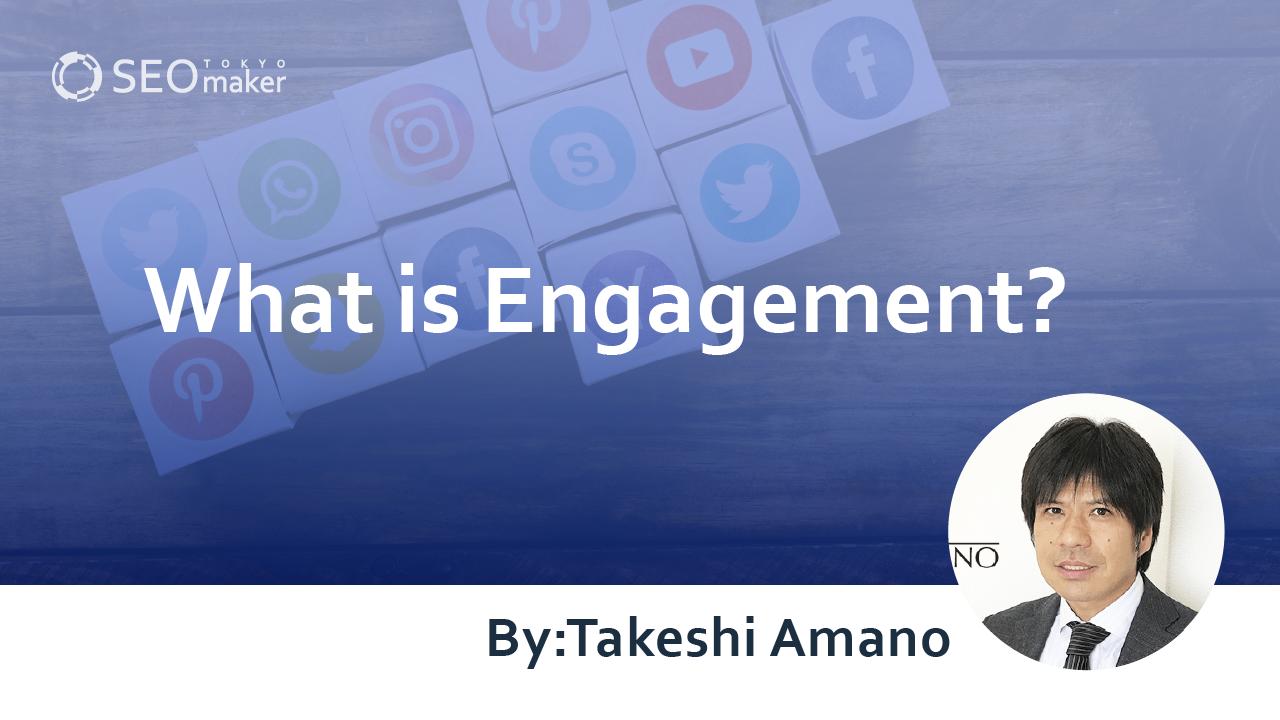What is Engagement? : Understanding Points for SNS Management
contents
- 1 What is engagement, as used in social media?
- 2 Tips for Enhancing Engagement Rate
- 3 Summary

Engagement is an unavoidable metric in social media management, yet its specific meaning might not be clear to everyone.
Engagement is one of indicators of how much interaction your posts receive. It’s a crucial metric in managing social media, so understanding it thoroughly is necessary. This article will explain different approaches to engagement across various social networks, how to calculate it, and tips to improve your engagement rates.
Originally, the term “engagement” conveys ideas like “promise” or “commitment,” but in marketing, it signifies the connection with consumers.
Therefore, customers with high engagement are those who show interest and concern for a company’s products or services.
Another frequently used term is “engagement rate,” which represents the ratio of responses to a post. It quantitatively shows how many viewers have interacted with the content.
The Importance of Engagement
Why is engagement crucial in SNS management? It is considered important for the following reasons
- Directly correlates with outcomes.
- Visualizes interaction with users.
- Allows for accurate measurement of impact.
This section will elaborate on the significance of these metrics.
Directly Correlates with Outcomes
Customers with high engagement are more interested in a company’s products or services, leading to a higher conversion rate. This means that high engagement directly influences outcomes.
Users with high engagement are more likely to share posts, which can enhance the sales of products and services.
Visualizes Interaction with Users
On social media, merely having followers doesn’t guarantee that posts reach them effectively.
However, engagement, indicated by users’ reactions to posts, can visualize the relationship with users.
In SNS management, it’s not just about having users view the content but also about generating interest in it. Therefore, having a large number of followers doesn’t necessarily translate to success; what’s crucial is managing the account with a focus on engagement.
Allows for Accurate Impact Measurement
As mentioned, having more followers doesn’t automatically mean better results. Therefore, in social media management, measuring how much interest users have is essential.
By observing the engagement rate, the impact of posts can be accurately assessed. High-engagement posts naturally lead to an increase in followers.
Approach to Engagement in Social Media
The concept of engagement varies across social media platforms. It is crucial to understand the specific approach to engagement on each SNS in order to accurately calculate the engagement rate.
Here, we will elaborate on the concept of engagement for different social media platforms.
X
On X, engagement is primarily measured through the following actions.
- Likes
- Retweets
- Replies
- Follow from a post
- Clicks on URLs, images, or videos
These actions are counted as engagement and can be reviewed through Twitter Analytics, allowing for detailed analysis, including metrics like profile clicks or hashtag clicks.
Engagement on Instagram is primarily measured through actions such as;
- Likes
- Saves
- Comments
- Shares
While some actions are similar to Twitter, like likes and comments, Instagram also includes unique actions like saving a post.
To monitor engagement on Instagram, switching to a business account is necessary. This allows access to insights, where you can gather various data, including profile visits and interaction counts.
Facebook
On Facebook, the following events are primarily considered as engagement.
- Like
- Share
- Comment
- Video view
- Click on photos, URLs, or icons
Facebook counts actions differently compared to other social networks.
On platforms like Twitter or Instagram, if the same user performs different actions, each action is counted separately. However, on Facebook, multiple actions by the same user are counted as one.
Calculating Engagement Rate
The method of calculation varies for each social network, so understanding how each platform calculates engagement rate is important.
X
On X, the engagement rate can be calculated using the formula.
Engagement Rate = (Number of Engagements / Number of Impressions) × 100
The denominator, the number of impressions, represents the number of times a tweet is displayed. Even if the same user views a tweet multiple times, each view is counted separately in the impression count. For instance, if a user views the same tweet three times, the impression count is three.
Instagram
On Instagram, there is no universally accepted method for calculating engagement rate, leading to various possible formulas.
- Engagement Number / Impression Number × 100
- Engagement Number / Reach Number × 100
- Engagement Number / Follower Count × 100
Since the denominator can vary, it’s necessary to decide which metric to use as the basis for calculation.
However, for consistent and accurate data collection, the chosen denominator should remain the same across all calculations.
On Facebook, the engagement rate can be calculated using the formula
Engagement Rate = Number of Engagements / Reach Number × 100
Unlike Twitter, which uses the number of impressions in its formula, Facebook’s calculation is based on the actual number of users who viewed the post. While impressions are counted each time a post is displayed, reach is counted per user, meaning multiple views by the same user are only counted once.
Tips for Enhancing Engagement Rate
The engagement rate is a crucial metric for gauging success and meeting objectives in SNS management. Thus, it’s not enough to merely increase followers or continue posting; a focused approach to boosting the engagement rate is essential.
In the following sections, we will delve into specific strategies to enhance the engagement rate on social media.
Clarify the Target Audience
To increase engagement, it’s necessary to create posts that interest the users.
This means clearly defining the target audience for your products or services, including understanding their problems and needs.
If the target is unclear, the content and message may become vague, reducing the likelihood of viewers taking any action and leading to lower chances of achieving desired results.
Firstly, defining the target and tailoring posts to meet their preferences is fundamental for enhancing engagement.
Adjust Posting Times
SNS platforms allow for precise scheduling of posts, and user activity varies across different times of the day on each platform.
For example, peak times like early mornings (6-9 AM) and late evenings (8-10 PM) are when many users are active on social media
Reference: Report on the Survey of Usage Time and Information Behavior of Information and Communication Media in FY 2020 | Ministry of Internal Affairs and Communications
Targeting these times for posting can increase the chances of reaching a larger audience.
Since optimal times can vary depending on the social media platform and target audience, it’s crucial to understand the daily rhythm of your users and schedule posts accordingly.
Engage with Users
One of the main advantages of SNS is the ability to communicate with users, which can significantly enhance engagement.
There are many ways to communicate with users, but mainly, there are the following.
- Responding to comments on posts.
- Liking or commenting on users’ posts.
- Replying to direct messages (DMs).
- Using question stickers in stories.
By engaging with users, two-way communication is established, which can increase engagement.
However, except for DMs, interactions on SNS are public, so it’s important to consider how your responses may be perceived by both the users and the broader audience.
One of the features of SNS is the use of hashtags. They allow tweets or posts with the same hashtag to be searched, enabling users with similar interests to share topics.
There’s an increasing trend of users opting for SNS search over traditional search engines. By using hashtags, posts can reach a broader audience, enhancing engagement from outside one’s current follower base. Include as many relevant hashtags as possible to expand potential user engagement.
Posting Content That Resonates with the Target Audience
To increase engagement, it’s crucial to post content that elicits a response from users. This involves linking the interests and concerns of the users with the company’s products or services.
Conduct a detailed analysis of the target user demographic to understand their interests and issues, and create content that addresses these areas. Differentiation from commonly seen posts or content is also vital to enhance engagement.
Cautions for Increasing Engagement Rate
While boosting the engagement rate is critical in SNS management, there are points to be cautious about.
Possibility of Decreased Engagement Rate with More Followers
As the number of followers increases, the engagement rate may decrease. This reduction is due to the increase in the denominator in the calculation formula, causing the relative figures to drop.
With more followers, both impressions and reach typically increase. Therefore, if the total engagement remains low, the engagement rate will decrease.
In social media management, having a large number of followers may seem like success, but the real challenge is increasing the total number of engagements, not just the followers.
Avoid Excessive Posting
Continuous tweeting or posting is crucial for increasing impressions and reach, but over-posting can lead to disengagement.
If followers see too many posts from the same account in their feed, it might be perceived as annoying or bothersome, which not only reduces engagement but also increases the risk of unfollowing.
If you need to post frequently, consider using features like stories to balance the visibility of your content.
Analyze Past Posts
Analyzing past posts is a shortcut to improvement across all media.
Identify previous posts with high engagement rates, and organize their commonalities and characteristics. Thorough analysis can help understand the tendencies that lead to higher engagement, informing future posting strategies.
It’s important to look beyond the numbers, considering factors like posting times and the demographics of responsive users.
Summary
With the widespread adoption of SNS, many companies have begun to use these platforms, making customer acquisition and promotion on social media is increasingly important. As such, engagement, which can affect a company’s revenue, has become an essential metric. Since each SNS has different approaches and calculation methods for engagement, it’s vital to understand these nuances and work towards improving the engagement rate. Keep in mind the points and cautions discussed to ensure effective SNS management.










![What is a Description? Explaining the Meaning, Writing Style, and Changing Word Count – [2023 Edition]](https://www.switchitmaker2.com/en/wp-content/uploads/2024/09/what-is-description.webp)










